無線ブログ集
| メイン | 簡易ヘッドライン |
リンク 単体表示

 アマチュア無線局 JO1KVS
(2025/11/18 10:35:52)
アマチュア無線局 JO1KVS
(2025/11/18 10:35:52)
現在データベースには 797 件のデータが登録されています。
 移動運用のマスト、アンテナ類の可搬ケース
(2022/11/11 3:13:08)
移動運用のマスト、アンテナ類の可搬ケース
(2022/11/11 3:13:08)
これで何をするのかと言うと、担ぎ上げ、と言うやつをしてみようと。
かなり前ですが道志村の菜畑山(なばたけうら)にマスト、トライポッド、50MHzの3エレデルタループを担ぎ上げ、カップ麺を食べながら本格的な移動運用を楽しんだことがあります。
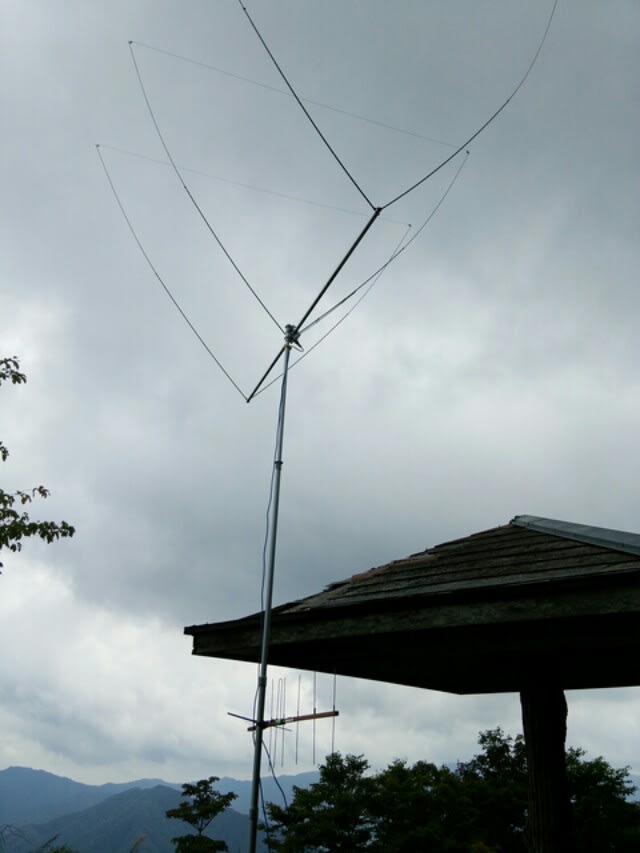
山梨県南都留郡道志村 菜畑山移動 - アマチュア無線局 JO1KVS
連休最終日、どこかで山頂移動をやろうと道志村の菜畑山(なばたけうら)1263mに登ってきました。今回は初のアルミ伸縮ポールとビームアンテナ運用。担ぎ上げました。車...
またこんなことをやりたいなぁと。ちなみに今ここは東屋は無いそうです。当時もボロボロで壊れそうでした。一式入るケースがあれば電車でも移動運用できますし、車から離れた場所での運用も便利になります。
あとは時間と行動力だな。
 PayPayの本人確認完了
(2022/11/10 4:12:35)
PayPayの本人確認完了
(2022/11/10 4:12:35)
めでたいわけだが不満もある。
PayPayは使える店があまり無い創設期から使用していて、当時も本人確認みたいのやったから(やらないと銀行からのチャージに制限があったような)、自分は済んでいると信じていました。系列の?Yahoo!カードの審査も通っていたし。PayPayカードに移行したからそれもやり直しなのか?
今回の本人確認で銀行への出金が出来るようになるようですけど。
だったら本人確認してないよマーク、明確に出してほしかったな。使えなくなるくらい明確に。これまでのくじ引きチャンス3倍分を返してくれ!と思っちゃいました。
ついでに言うと、通販とかの決済でPayPay選択してアレコレ操作して決済終わった時は静かにしていて欲しい。サイレントモードでもPayPay!と叫ぶもんだから電車の中で恥ずかしい思いをした。(笑)鳴る場合と鳴らない場合がある。今回はどっち?怖くて決済を電車降りてからしている。
 IC-705用(ではない)本革製ケース
(2022/11/8 7:36:15)
IC-705用(ではない)本革製ケース
(2022/11/8 7:36:15)
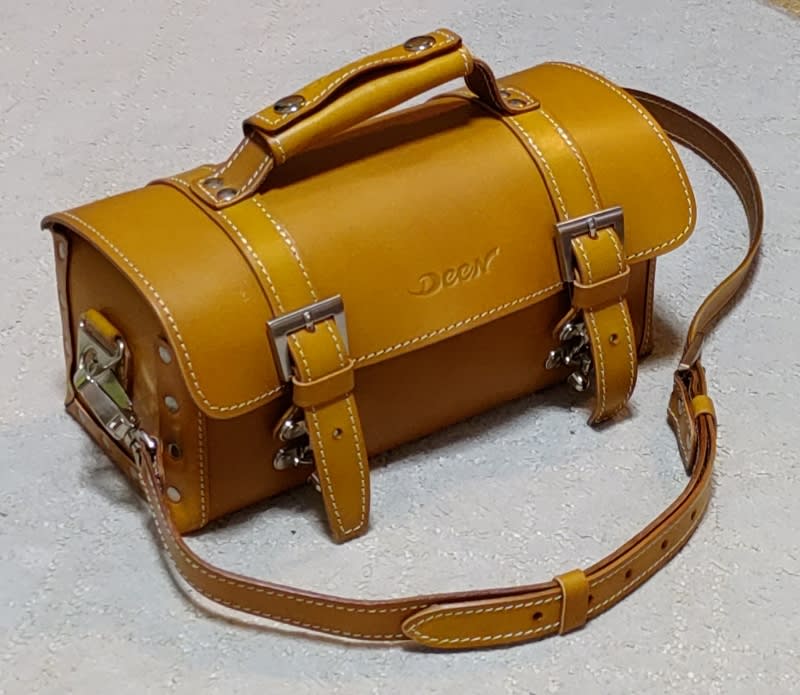
IC-705マイクアンテナ(ロッドタイプ)2本PDモバイルバッテリー超小型パドル変換コネクタ等入ってます。
勿体なくて地面に置けないなぁ。(笑)
 相模原フェスタwith let's cill out!
(2022/11/7 12:55:31)
相模原フェスタwith let's cill out!
(2022/11/7 12:55:31)
土曜日の10:30頃入場しました。駅からの徒歩もだーれも歩いてない。果たしてこれで合っているの?状態で、場内は準備は整っているけどまだお客さんほとんど居ない。ずっとこんな感じかな?と思っていたら大間違い。11:00にはかなり賑わい、お昼は超賑わってました。
入場してファクトリーギアをあてずっぽうに探し、比較的すぐにたどり着きました。お店のお姉さん、お兄さんと話しながら、この工具はアレコレのやつですよね、とか、これは今がチャンスですね、とか、話していたら、今日買うべき!!と言うものがいくつか出来てしまい、ん万円のお買い物となってしまいました~。いつもファクトリーギアで買い物をすると予算の数倍買ってしまうんですよ!
本当は、内装リムーバーの金属のやつ、ワイヤーカッターがあれば買おうかなと思っていたのですが、買ったのは、「工具好き」Tシャツ、革製工具箱、ドイツ製無反動ハンマー、クニザウルス、メジャー、超小型のプライヤーレンチでございました。
荷物は帰りに受け取るとして、何も基礎知識の無いままやってきたイベントを一通り見て回ります。
珍しい車の展示キャンプ系のお店相模原ゆかりの各店舗、各団体食べ物ステージ広大な敷地にこれでもかと。
いや~楽しい。売っているものも特別価格で安かったり。フリースも買っちゃいました。
今年のテーマがキャンプだったらしく、次はどんなテーマかはわかりませんが自分の興味ある分野でしたのでとても楽しかったです。
ココなら自転車で来れるし路線バスの直通もあったみたい。行って良かった。来年もココでやってくれるかな?楽しみです。
アマチュア無線はハンディ機を持っていったので八王子レピーター経由で知り合いと2交信しました。
今夜写真追加します。また見てね。
 クニペックスの工具でモービル基台化粧座金を回す
(2022/11/6 11:29:19)
クニペックスの工具でモービル基台化粧座金を回す
(2022/11/6 11:29:19)
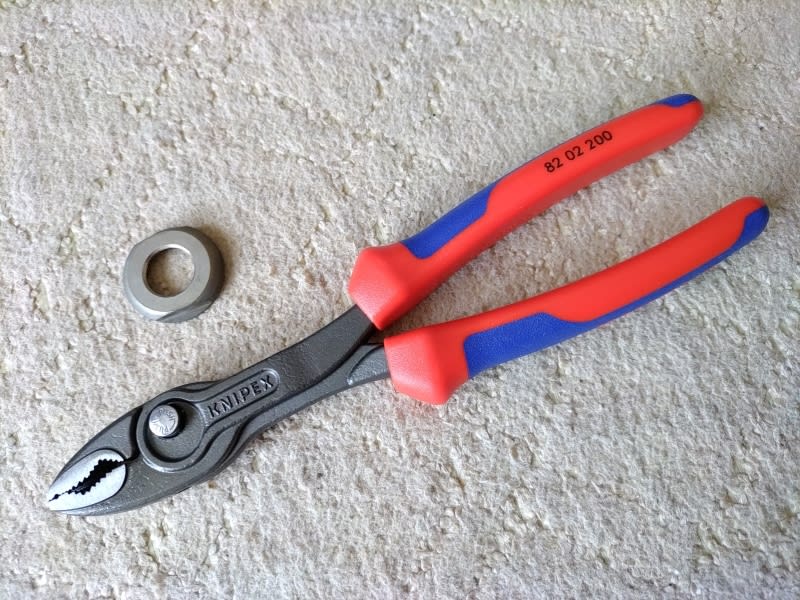 クニペツクスの 82 02
200人気品薄の製品をゲットしました。日本のエンジニアさんのネジザウルスをクニペックス風に造ったものと話題でクニザウルスと呼ばれています。
クニペツクスの 82 02
200人気品薄の製品をゲットしました。日本のエンジニアさんのネジザウルスをクニペックス風に造ったものと話題でクニザウルスと呼ばれています。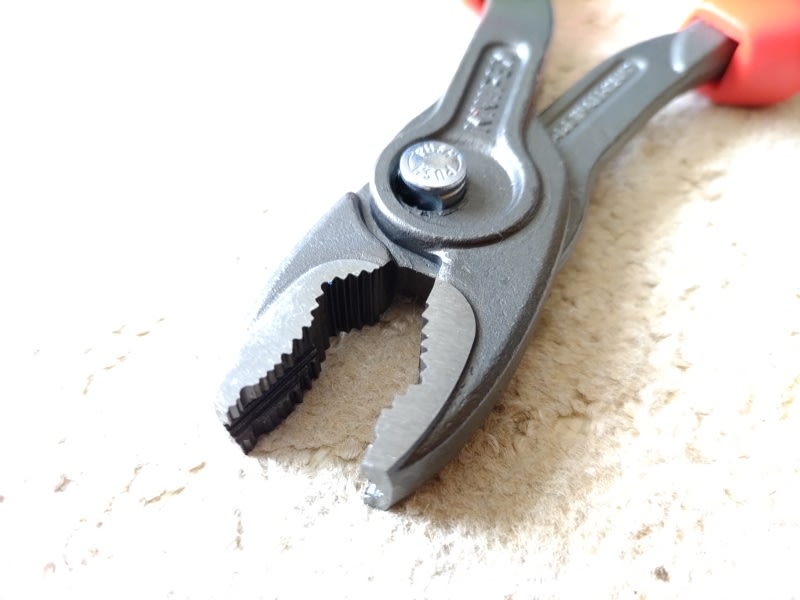
この通り、ネジの頭を掴んで回せる歯が付いてます。
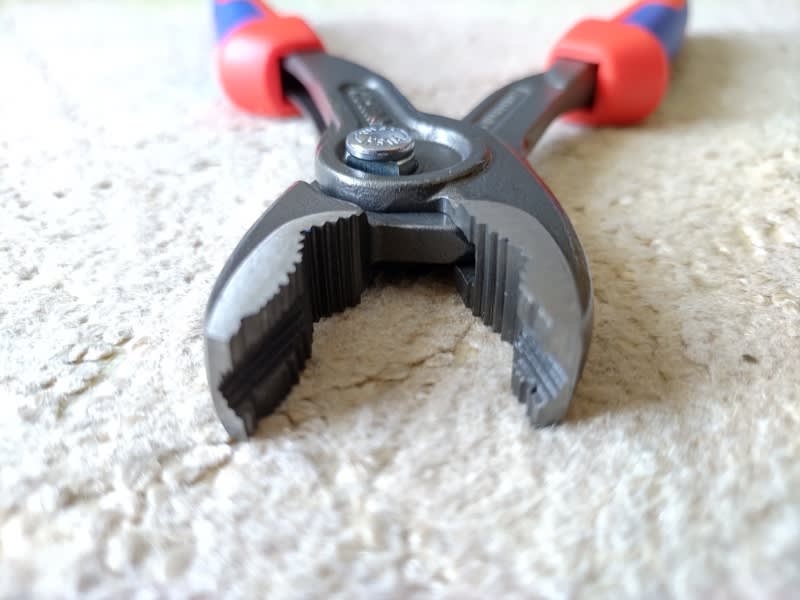
クニザウルスは何段階か大きく開くことが出来ます。そこでモービル基台の化粧座金をつかんでみました。
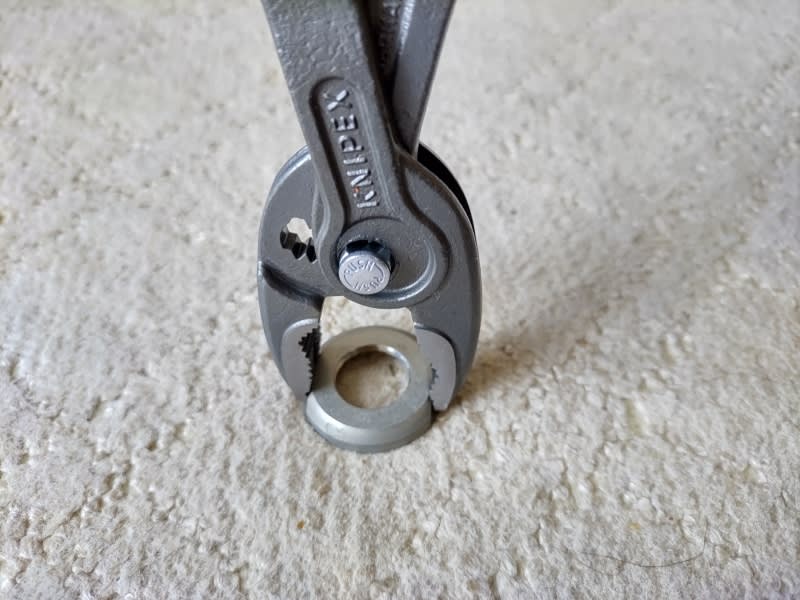
がっちりつかめ、十分な強さで回せそうです。クニザウルスは六角ナットとの相性も良いので用途は広いです。(メガネレンチやソケットレンチがあればそちらが優先)
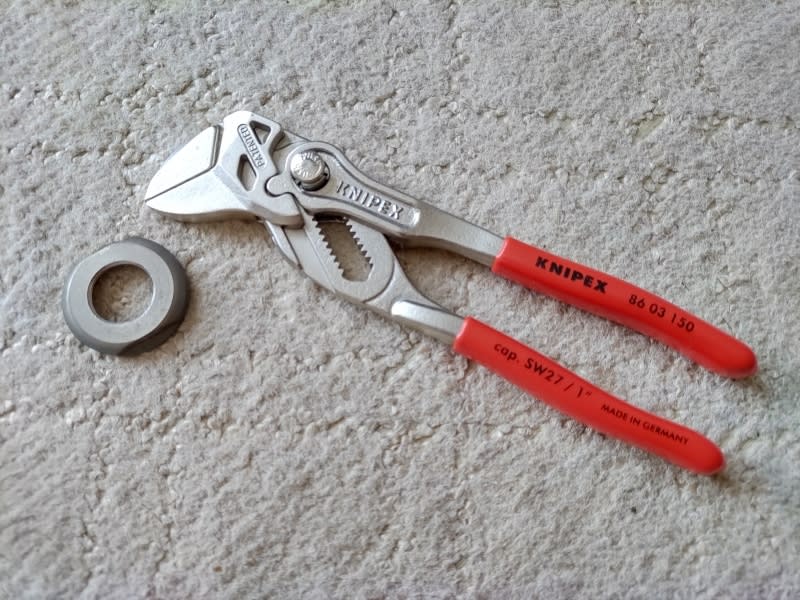
これはクニペックスの名品プライヤーレンチ。口は常に平行に開き、握りとの間にはギア構造がありますから、掴む力は強力。ナットを回す時に広がることはまずありません。これは密着状態で回せる点でスパナより優れています。
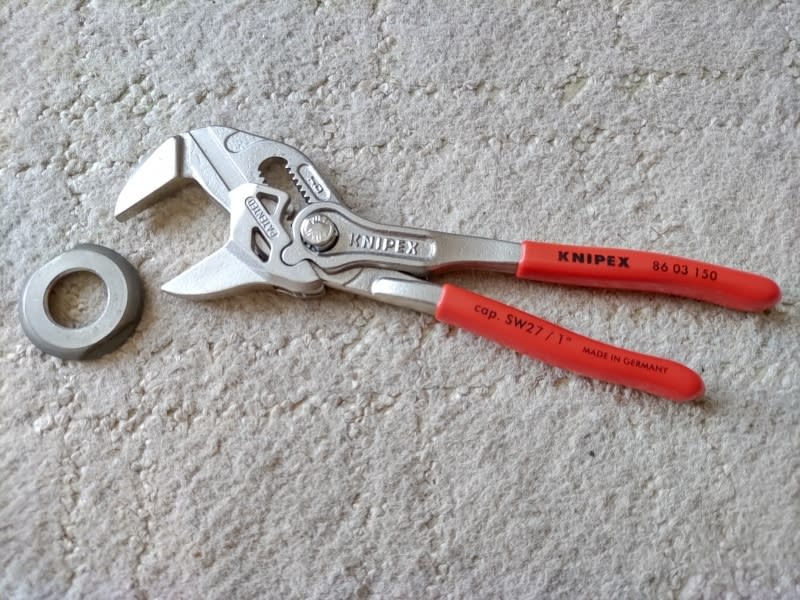
ちょうど良い広さに調整(ボタンを押してスライド)してから

レバーを開閉してつかみながら回します。二辺しか当たるところの無い座金にはこの工具が一番かな、と思います。
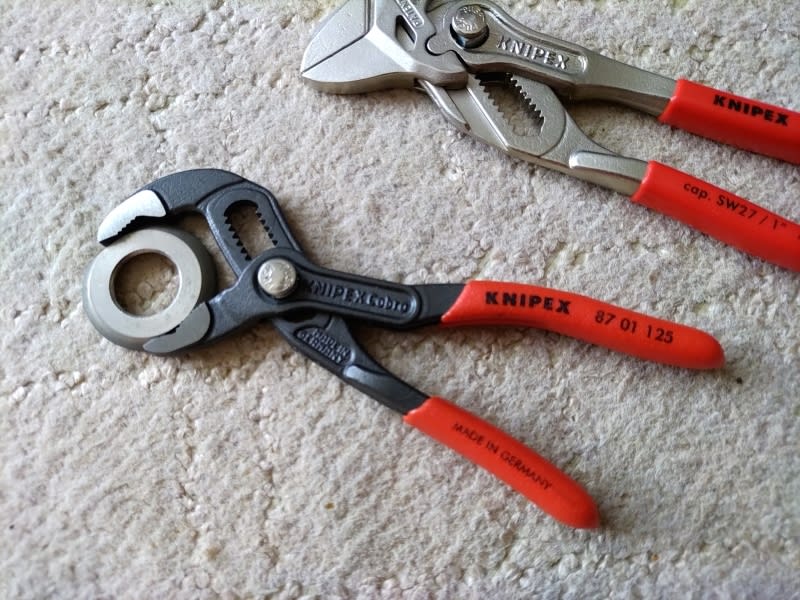
最後に、クニペックスのミニコブラ(ウォーターポンププライヤーのミニサイズ)を当ててみました。いい感じに掴んでとてもがっちり回せそうな感じです。
車にはトップ工業の薄口ミニモンキースパナ(赤いやつ)を積んでます。ミニなのに大きく開いて化粧座金も回せます。
 IC-705 用? 本革ケース
(2022/11/5 13:57:50)
IC-705 用? 本革ケース
(2022/11/5 13:57:50)
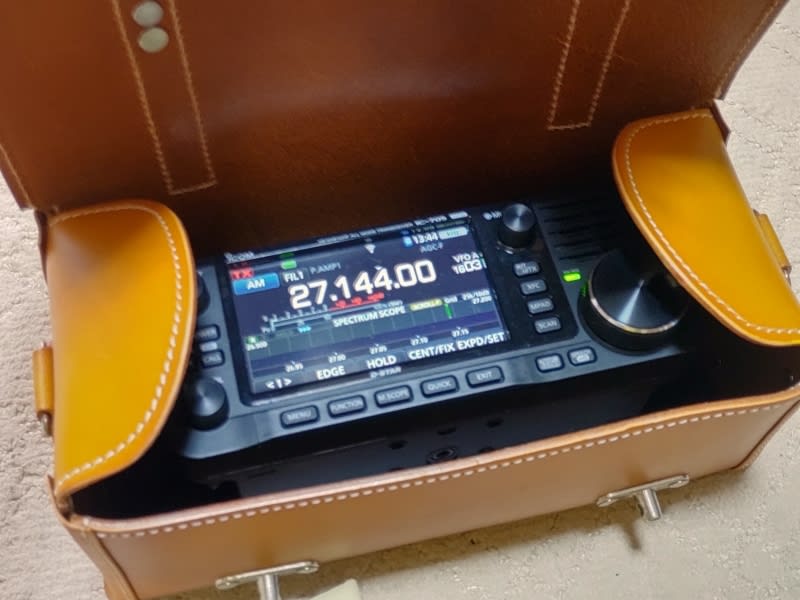
ではなくて、これは工具箱なんです。ヨーロッパの職人さんが使うような。肩から下げて移動する修理屋さんとかの。それをイメージしたレトロなケース。
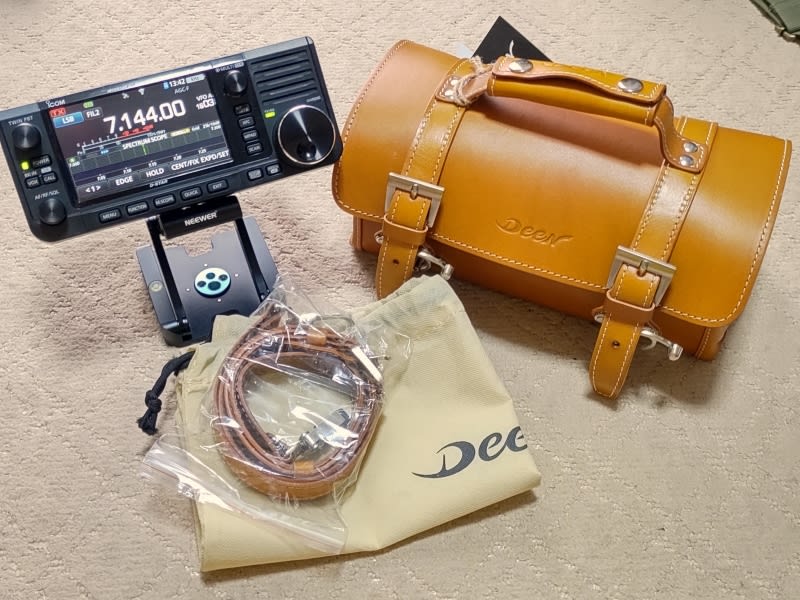
試しにIC-705を入れてみました。余裕ありますので、他の周辺機器等も全て収まります。チューナー一式は無理かな。
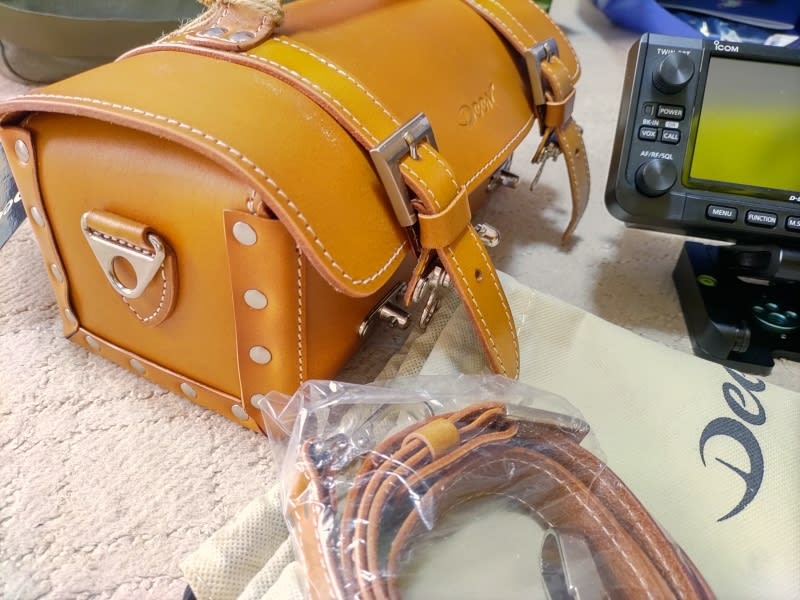
いかがでしょうか?これ。色ちがいでいくつかバージョンがあります。
これをボロボロに使い込めれば立派ですね。
ファクリーギア各店、またはネットショップでご購入いただけます。
 護衛艦 出雲 公開イベントに参加してきました
(2022/11/4 8:25:11)
護衛艦 出雲 公開イベントに参加してきました
(2022/11/4 8:25:11)

朝8時から整理券が配られるとのことでした。これがどのくらい余裕があるのかわからない。どうしても朝7時に家を出るのが限界。もしかしたら整理券間に合わず乗れないかもしれない。
桟橋手前に整理券行列最後尾がありました。ってことはまだ大丈夫。セーフ。行列に1時間並びました。整理券を受け取ったのが9時半。11時からの整理券でした~。
意外とすぐだ!
10時30分頃にまた来てとのこと。1時間ばかり大桟橋のあらゆる角度から出雲を眺めてました。
さていよいよ乗船の列に並びます。整理券を見せて、手の消毒と検温、持ち物検査。小さなサコッシュでしたが隅々懐中電灯でチェック。閉まっているところも全部開けて見せないといけない。さらに金属探知機で全身スキャン。前向き、後ろ向きと。私のハンディ機は何も言われなかったけど同行の無線仲間はデジ簡に長いアンテナをつけていたせいか、預かりの話が!でも警備の責任者が「無線機はよし」との指示で解放されてました。
何度も折り返しながら乗艦口へ、乗る直前に整理券回収。
乗るとそこは体育館のように広い格納庫、流れに乗って進んでいくと甲板に垂直に上がるエレベーターに乗ります。
これで一気に上るとそこは憧れの空母のデッキ。600m以上ある飛行甲板、自由に見て回れます。

いや~嬉しい。のんびり一周回りました。


艦長さんは記念撮影に応じておられました。
大きなアンテナがありました。

とても頑丈そう。こんなのが欲しい~。ベランダに(笑)。
整理券は充分にあったようで午後から来た人はすぐに乗れるくらいで甲板も空いてきた感じ。慌てて朝イチに来なくても大丈夫な感じでした。そこは巨艦ならではですね。
横浜に出雲が来ているのを知らない人も多くてビックリしている観光客もたくさん居ました。
ランチを食べたあとは再び大桟橋のてっぺんにあがり、出雲を眺めながらハンディ機での無線運用。なんとあの、若い頃憧れだった、南極よりもカリブ海よりもアフリカよりも交信したかった局が!!フェリス女学院アマチュア無線クラブが文化祭で運用しているではありませんか!!もう親子どころの歳の差ではありませんが喜んで交信したのは言うまでもありません。(^_^ゞコールサインも当時のままでした。
その後横浜市交通局の移動運用との交信、続いてCQを出して6交信。合計8交信出来ました。交信していただきありがとうございました。
楽しい1日を過ごせました。
 カーナビの地図アップデート
(2022/11/1 3:03:35)
カーナビの地図アップデート
(2022/11/1 3:03:35)
出来上がったSDカードをカーナビにセットするだけで新しい地図データを入れるかどうかの案内が出ます。ハイを押したら終わるのを待つだけ。エンジンをかけたまま行うこと、が注意点です。ガソリンもったいない・・・
カーナビ側の作業は実に簡単。無線機のファームアップもこういう流れにしてもらいたい。カード入れて電源入れると案内出る、みたいな。アイコムさんのは比較的楽だけどヤエスさんのはひどいですね。是非ご検討を。
 パソコンでCW USBケーブル一本で出来る無線機
(2022/10/31 0:00:00)
パソコンでCW USBケーブル一本で出来る無線機
(2022/10/31 0:00:00)
先日の移動運用でパソコンだけで電信を運用したのですが、その時使ったインターフェースがUSBIF4CWというもの。
大変重宝しています。
パソコンからの信号でモールスを打ってくれる品物です。
この出力を無線機のKEY端子につなげばよいのでどんな無線機でもパソコンでモールスを打てるようになります。
無線機側はパドルではなく、電鍵をつないだことにしないといけない点だけ気をつけてください。
他にも使いようがあって、送受信の切り替えだけに使うとか、単に電信を打つ機能以外の使い方も紹介されています。
今後もこれを使い続ければ良いのですが、IC-705の設定画面を見ていくと、USBで電信、USBでRTTYの符号が打てる機能があるようで・・・
やってみました。
CTEST-WIN DSCW 共に簡単な設定で実現しちゃいました。
無線機の方の設定も成功している人の真似をするだけ。
でもなんだろう?パソコンで符号を打つとサイドトーンが鳴らないなぁ。きっとやり方はあるのでしょう。
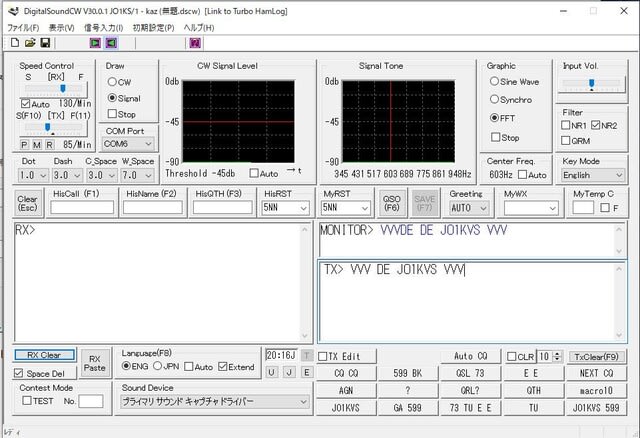
DSCWは和文も解読、送信が出来るので、にわかワブラーになれちゃったりします。実力も無いのに出るのは怖いですけど。
友達と交信練習するにはいいかも知れませんね。
DSCWの画面にある、交信相手のコールサイン、レポートを打ち込んでおけばマクロ電文に反映してくれるので楽々送信。
QSOボタンを押せばハムログに転送されちゃいますから、あらためてハムログに打ち直す必要もありません。
さらにSAVEボタンを押せばハムログの登録が確定します。ですからハムログの画面は一切触らずにハムログの記録が完了していきます。
このDSCW、設定が起動のたびに呼び込まないとインストール状態になってしまうようになっています。
名前をつけて保存した設定ファイル。こっちから起動すればよいので、設定ファイルのショートカットをデスクトップとかに置いておくと便利です。
IC-705などの最新のICOMのリグをお持ちの方はUSBケーブル一本でのPCキーイング、やってみてください。
なかなか面白いですよ。
 パドルも電鍵も無いのにCWを運用
(2022/10/30 2:29:08)
パドルも電鍵も無いのにCWを運用
(2022/10/30 2:29:08)
実は、昨日の大月市の桂川ウェルネスパーク移動運用、FT8メインでやっていたのですがPOTAサイトにCWも予定している、と宣言した都合もあり、CWの運用もやったんです。
USBIF4CWという武器を使ってパソコンキーイング。通常はパドルを使って、イレギュラーな部分を補う。
ところがPCの動きが悪い悪い。
FT8関連のソフトは複合的にいろいろ立ち上げるのでそのせいなのか、強い電波をパソコンが浴びたからか、画面展開が遅くってうまく交信できない。
一度再起動すれば良かった・・・。
で、本題としては、パドル、持っていくの忘れてた、という話題。
運転席には常設パドルがあるんです。運転席に座れが使えるやつが。
でもその日は後部座席で運用せざるを得ない。
もともとモービル機がリアの荷室に置いてあって、その脇に持ち込んだリグを置いて、アンテナとかチューナーとかつなぐため、後部シートを前に半分倒してその横で運用することになる。

遠近感誇張されてますけど。
とっ散らかって恥ずかしい。
パドルの無いCW、599BK形式ならパソコンのキーイングソフトに登録してある文でなんとかなる。
でPKサービスで移動運用されている局を呼んでみたら、なんと一発目から、QTH?が来てしまった!
どうしよう!!
キーボード打つ。打つと符号が飛んでいく。
え~っと、え~っと!
BK QTH is JCC 1706 PK26 PK26 BK
と慌ててるもんだから大変でした。
やはりパドルを使わないと駄目ですね~。英文タイプライターで育った欧米人じゃないので。
今回のCW運用はスムーズではなかった・・・ごめんなさい。
写真は送信中の絵ですね。
受信中は7.041MHzになりますから。
後ろに転がっているのがポータブル電源の小型タイプ。
これでも充分遊べます。
3時間運用して60%以上残ってました。
IC7100Mの受信時電流の少なさのおかげかな。
ポタ電の消費電力表示も8Wと出てました。
ちなみにIC7300もIC9700も、受信時は0.9Aなんです。これ移動運用に良いです。
八重洲の最新の707でしたっけ、あれは大食いです。3倍流れちゃいます。常時送信しているような食いようです。
移動運用に、と設計したのでしょうけどちょっと受信電流多すぎです。何年も前の機種だけど自分なら7300買っちゃいますね。
FT817は、0.7A近く流れる。ポータブル機としては大食いです。標準バッテリー容量小さいのに。
KX3の受信電流はぐっと少なく0.2A程度です。
何度も言ってますが、KX3とリニア、というのが移動運用の理想かも知れません。消費電力を考えると。
話題が変わってしまった・・・。
PCキーイングも練習しなきゃ。
